

How to Plan a Tanzania Safari Like a Pro
The East African country of Tanzania is a wonder of the African continent. While few people will venture to other parts of Africa, you can pretty much guarantee that most people that have been will have done a Tanzania safari.
The country is home to Mount Kilimanjaro – Africa’s tallest mountain, a portion of Lake Tanganyika – the world’s longest and second-largest (by volume), well over half of the famous Lake Victoria, the glittering paradise of Zanzibar, the world’s largest intact volcano caldera in the form of Ngorongoro Crater and the main portion of the most famous of African ecosystems, the Serengeti.
A treasure trove of nature with 38% of its land dedicated to conservation efforts, it’s no wonder that taking a Tanzania safari is on the top of many bucket lists.
But where should you go? And when should you go? And should you go at all – is it safe? We’ve put together a handy guide to help answer your questions and get you on the road to the safari of a lifetime.
How to Plan a Tanzania Safari
Table of Contents

Best Time to Plan a Tanzania Safari
As with many tropical countries, the climate of Tanzania is divided roughly into a Wet and a Dry season. And though each one may have its pros, there are certainly cons that come with each one, too.
Luckily the northernmost parks, including Serengeti National Park and particularly Ngorongoro Nature Reserve, are superb for safari all year round.
The clue is in the name: it’s wet in the wet season. Running from November to May, usually, these are just short afternoon showers, which actually help to clear the dust and haze in the sky. It’s only from March to May that the rain can get seriously heavy.
It’s often overlooked by tourists at this time, but this ‘low season’ effect means cheaper rates and fewer crowds. Also due to the rain, the flora is flourishing in the wet season, making everything look more verdant and beautiful.
The time of year is also important for cycles in the animal kingdom: migratory birds become more prevalent – perfect conditions for birdwatchers – and late January to February is calving time for wildebeests.
The latter also means that there’s a good chance of seeing a predator in action. As for specific parks, however, Tarangire National Park experiences a mass migration of animals during the wet season, so it is not recommended for viewing wildlife.
The dry season runs from April to October and guess what: it’s dry. You can expect clear skies and less water, which means a lot fewer mosquitoes buzzing around.
Also because of this dryness, animals congregate on certain stretches of river and around communal waterholes – meaning that there are ample opportunities to spot not just one but several different animal species in one go.
The lack of vegetation and leaves on the trees also makes it much easier to glimpse the wildlife you came to see.
There are mainly plus sides to the dry season (except for birdwatchers – sorry) but one thing that might bother some people is the temperature. Since Tanzania is in the southern hemisphere the usual summer months, for North Americans and Europeans anyway, are flipped.
While daytime temperatures are ok, it can be very cold in the mornings and at night. So if you’re planning to safari from June to August pack accordingly!

Getting to Tanzania to Start Your Safari
Tanzania is located in East Africa and can be reached internationally by plane at the Julius Nyerere International Airport, the airport that serves Dar es Salaam – the capital city of Tanzania. Another airport served by international flights is Kilimanjaro International Airport, halfway between Arusha and Moshi.
The town of Arusha is the ‘gateway’ to the northern part of the country – and that means the famous regions of Ngorongoro and Serengeti; for that reason, it’s known as the safari capital of Tanzania.
Arusha is located just south of its own safari-prime area – the 137 square-kilometers of Arusha National Park (including 14,967.6 foot tall Mount Meru).
Many other airports and airstrips are located near to the National Parks and Reserves of Tanzania. Although domestic flights are often late, they are reliable and are a quick way to get around the country if your time is limited and you want to see a lot.
Road and Train
Driving around Tanzania is usually recommended only if you have prior experience of driving in developing countries. You will also need to get used to driving on the left-hand side of the road.
The roads are often not in the best of conditions either, especially in the rainy season, so a 4×4 sports utility vehicle is the best choice: think Range Rover, Land Cruiser or Hi-Lux.
There is also a domestic train system linking Tanzania’s main cities – including Dodoma, Kigoma, Tabora, Mwanza, and Dar es Salaam.
It’s cheap and reliable, which is ideal if you’re on a budget, and there are three classes to travel in: first (cabins with 2 beds), second (cabins with 4 beds), and third, which is open seating.
Food is usually available from a dining cart, or from local vendors who frequent the trains.

Top Places for a Tanzania Safari
Clearly, there are ample opportunities all over Tanzania for a successful safari – and that’s at almost any time of the year (provided you don’t get caught in the deluges that occur at the height of the wet season).
Some places aren’t even safari destinations: the Jozani Chwaka Bay National Park on the island of Zanzibar, for instance.
If you are up for the challenge, Mount Kilimanjaro National Park awaits with wildlife such as blue monkeys and colobus monkeys to see in the treeline before the climb gives way to seriously rocky terrain.
But here are the parks that matter when you think ‘Tanzania safari’.
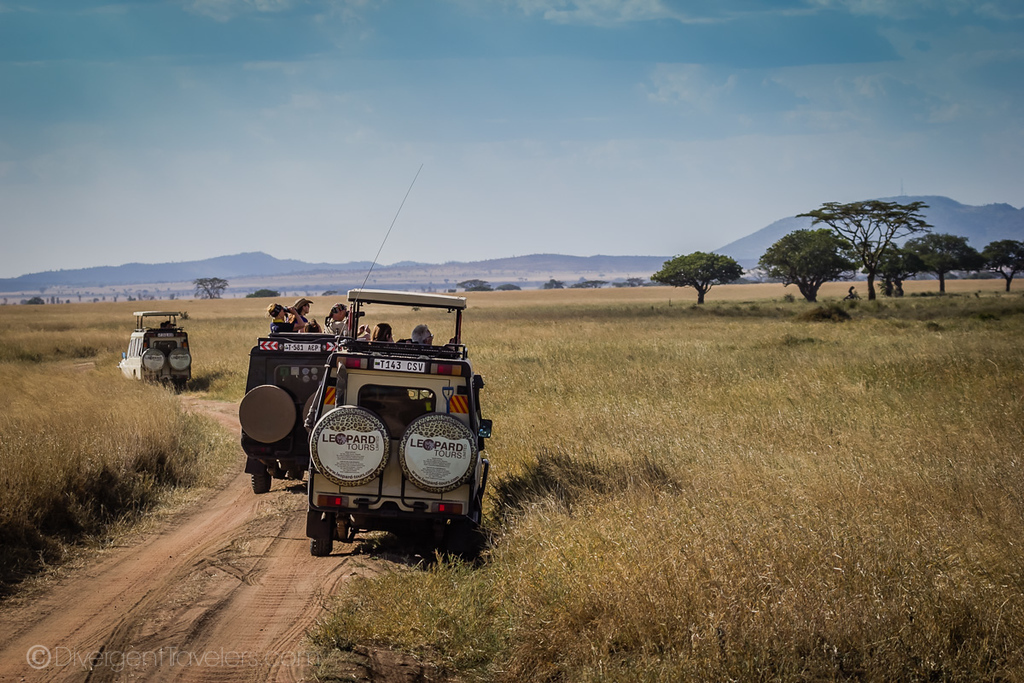
Serengeti National Park
This is the classic one, the one, and only Serengeti National Park . Almost everyone has heard of the Serengeti. This park is famous on TV shows and nature documentaries, in magazines and online – and Tanzania is home to the bulk of this geographical region.
In the Serengeti, you can find 70 large mammal and 500 bird species spread among swamps, grasslands, and woodlands. This includes buffalo, zebra, antelope, and wildebeest.
The latter is famous in the region: the wildebeest migration is the largest terrestrial migration on earth when the herd comprises 1.7 million wildebeest. This astonishing sight can be witnessed here, sometimes via hot air balloon safari.
Being Tanzania’s flagship conservation area there is no lack of accommodation for visitors and you can stay at one of many family-friendly lodges, join a mobile tent safari, or have a spot of honeymoon luxury.
But remember to book in advance for the June – July wildebeest migration.
Recommended Serengeti Lodges:
- Serengeti Serena Safari Lodge : 4-star lodge with private guesthouses, meal plans, common areas and a large outdoor pool. Rated a 9/10.
- Serengeti Pioneer Camp : Exclusive traditional safari camp that offers luxury glamping. Only 10 private tents available and a full program. Rated 10/10.
- Kirawira Serena Camp : 5-star luxury safari camp with full-service programs. Think sundowners, private safaris and the like. Rated 9.2/10.

Ngorongoro Conservation Area
Though not a national park, Ngorongoro Crater was designated a UNESCO World Heritage Site in 1979. It’s easy to see why: this neighbor to Serengeti National Park provides some of the easiest game-viewing in the country.
With surprisingly diverse habitats, stunning scenery (this is an extinct volcano caldera, after all), and a wide selection of animals to see, it’s not unusual for a day of safari at Ngorongoro to include glimpses of all the famous ‘big five’ animals.
Ngorongoro being a crater means that you can stay at one of many cliff-edge lodgings, offering astounding views out over the landscape. You can also stay at the nearby town of Karatu, where some lodges are in working coffee plantations, and guides can take you out for hikes in the picturesque hills.
Our time spent in Ngorongoro on safari was some of the best wildlife viewings we had in our 4 months of traveling through Africa. The crater is full to the brim with high numbers of wildlife. It’s really impossible to visit and not see something cool.
Recommended Ngorongoro Crater Lodges:
- Neptune Ngorongoro Safari Lodge : 5-star all-inclusive luxury lodge. This place is posh and would be a perfect honeymoon spot. Rated 9.9/10.
- Ngorongoro Sopa Lodge : Comfortable 4-star lodge that offers everything you need for an enjoyable experience.
- Ngorongoro Serena Safari Lodge : A favorite among visitors to the Ngorongoro Crater. Good value and full-service programming. Rated 8.5/10.
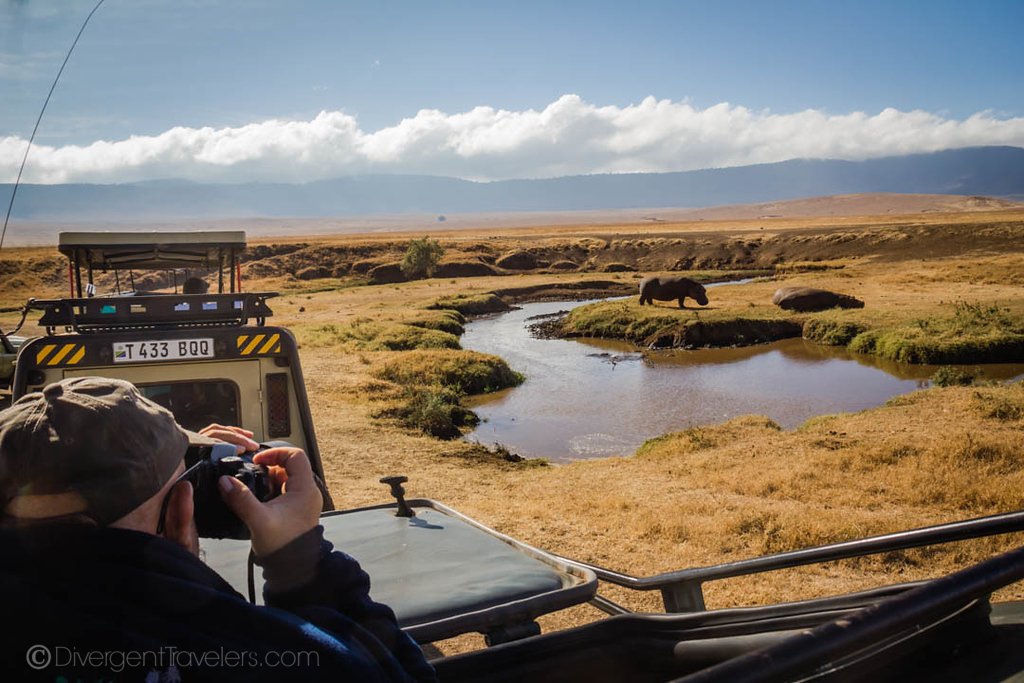
Tarangire National Park
Named after the Tarangire River which flows through, this park is often overlooked in favor of the more famous Tanzania safari destinations. However, Tarangire has some unique sights to see.
Pythons can be found winding their way up baobab trees in the park, elephants are quite a common sight here, and most interestingly of all is Tarangire’s famous tree-climbing lions.
The 550 breeding bird species that call this national park home is thought to be the largest of any such park in the world – these include Africa’s heaviest bird, the Kori bustard, and the world’s largest, the ostrich. Accommodation here varies from honeymoon hideaways to family-friendly camps.
Recommended Tarangire National Park Lodges:
- Tarangire Sopa Lodge : This is the most visited lodge in the Tarangire area. Features a pool and a full program. Rated 8/10.
- Tarangire Treetops : A unique property with comfortable treetop styled guest houses.

Wildlife in Tanzania
There is a whole host of wildlife in Tanzania’s Reserves and National Parks, each one offering a slightly different experience based on the fauna that’s most prevalent there.
The country is home to the classic ‘big five’ animals that people around the world associate with safari: we’re talking elephant, lion, leopard, buffalo, and rhino. Wildlife viewing is said to be “without parallel in Africa”.
With 17 national parks across a whole host of ecosystems, plus conservation areas, game reserves and other parks, a Tanzania safari is bound to encompass crocodiles, warthogs, giraffes, and hippopotamus, too.
You can also see birds like the flamingo, African river eagle and much more. Species of monkeys are visible in more forested areas too, including blue monkeys and red Colobus monkeys.
The wet season is perfect for birdwatchers when many migratory species can be seen along with the new green and lush land fed by the persistent rain. But the most famous migration is also the biggest migration of land animals in the world: wildebeest migrating in a million-strong herd every year in June and July.
And if you prefer to watch predators at work, calving season for wildebeests (January-February) is a good time.

Health and Safety
Malaria is a concern in Tanzania, so it’s advised that you bring along anti-Malaria pills, as well as repellent containing at least 30% DEET; on top of that, covering up in the evening and early morning is recommended as this is when mosquitoes are most active.
Staying safe when there are big mammals and reptiles around is important. Some general points would be not to make too much noise, always walk in a single file and follow your guide.
Be sure to always watch your feet when walking in the bush, but other more specific things is not to drive between elephants, or come between a hippo and a source of water (that’s their escape route!).
The key point is to always listen to your guide.
More on Africa Safari:
- 25 Photos That Will Make You Want To Visit Africa
- 10 Interesting Things to Do in Zanzibar
- Preparation Tips for Climbing Mount Kilimanjaro
- Serengeti Safari Experience in Africa
- 25 Epic Places to Have the Best Safari in Africa
- Gorilla Safaris in Africa: Everything You Need to Know
- Top 8 African Safari Animals (and Where to Find Them!)
- Ultimate Vaccination Guide for Africa Travel
- Africa Overland Trip Budget: Complete Breakdown
- Oasis Overland Trip Through Africa: What to Expect
Did you like this post? Share it!
Travel planning resources, about lina stock.
Lina is an award-winning photographer and writer that has been exploring the world since 2001. She has traveled to 100 countries on all 7 continents. Member: SATW, NATJA, ATTA, ITWA
Leave a Comment Cancel reply


A man who's in love with Travelling
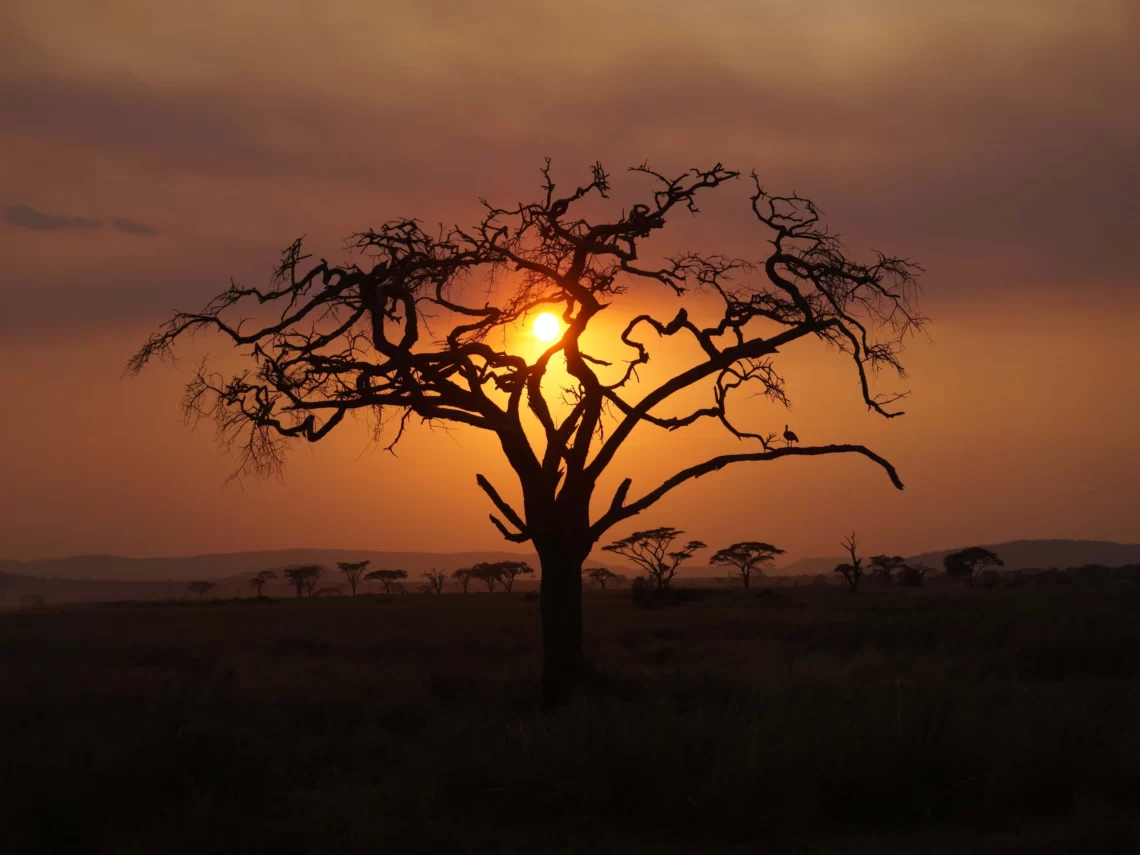
11 Essential Tanzania Safari Tips for First-Time Visitors
Are you planning your first Tanzania safari adventure and feeling overwhelmed with all the information out there? Planning for a safari trip can be intimidating, especially if you are a first-time visitor to this beautiful country. Let me share some Tanzania safari tips and tricks to enhance your experience.
Tanzania is home to some of Africa’s most iconic and diverse wildlife reserves, including the Serengeti National Park and Ngorongoro Crater. With its stunning landscapes and rich wildlife, a safari in Tanzania promises an incredible journey into the heart of the African wilderness.
In this guide, I will help you with everything you need to know before your Tanzania Safari and how to plan your perfect safari. Let’s get started. There is a bonus section at the end for my Indian readers.
Table of Contents
1. Best time to visit Tanzania for a Safari
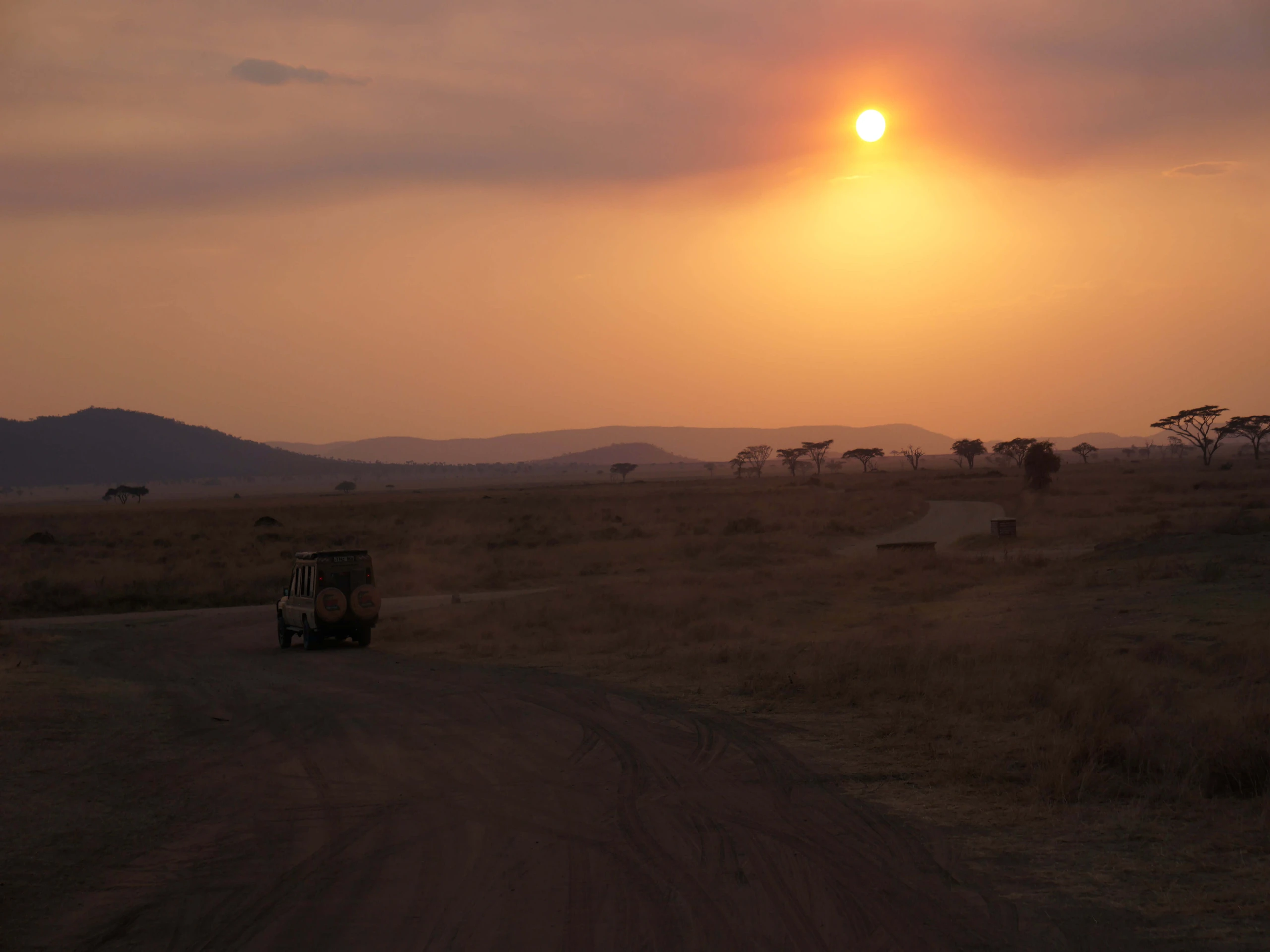
The best time to visit Tanzania for safari is during the dry season, i.e. from June to early October. This is the time when you’ll find a lot of wildlife near water sources and it even gives glimpses of scenes from The Lion King.
The weather is also very pleasant and not too cold and there is barely any rainfall. But this also means it is the busiest season for tourism. By busy season I mean 25-30 jeeps if a big 5 or a big cat is found.
Now if you want to see the biggest wildlife migration then you have no other option other than to visit it during this period. If you want to see fewer people and a safari a little cheaper on the pocket, you should visit it in the shoulder season which is from December to February.
It is best to avoid the safari during the rainy season because the animals also hide to get cover and the roads will be horrible.
2. Choosing the right safari company
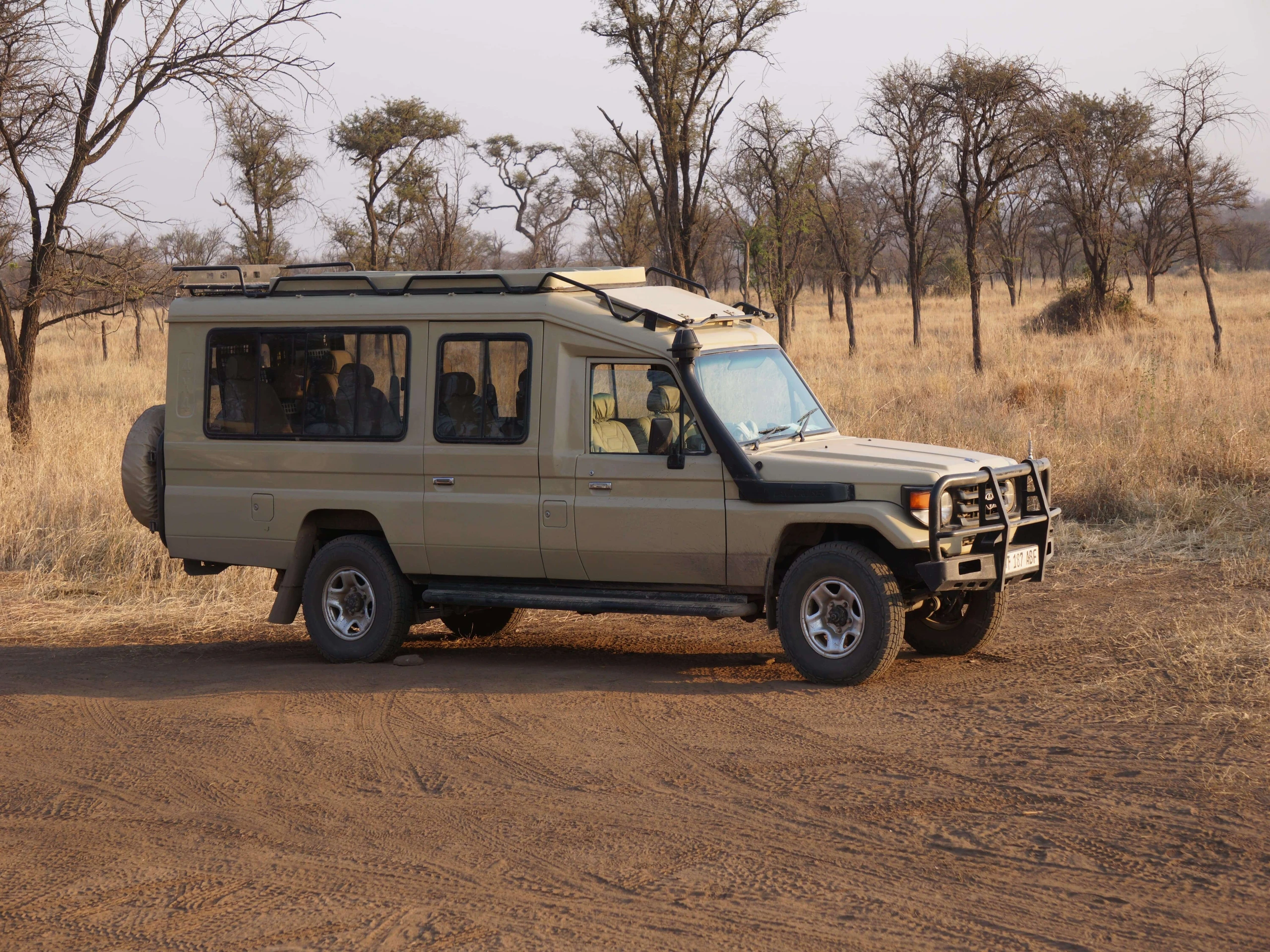
I can’t stress enough how important it is to choose the right safari company for a memorable safari experience in Tanzania. I researched more than 30 companies based on my budget and other necessities to finalize the safari company.
More than the company it’s your guide who is important, they will accompany you throughout the safari and have to be very knowledgeable about the parks and the animals. I was very lucky to have found Omary who was my guide because of whom I was able to experience the greatest wildebeest migration .
To make sure you choose the right safari company, I have provided a checklist of questions you should ask the company before you book them. Find the checklist at the end of this blog.
I can vouch for two companies with whom I had the best experience in Tanzania
- Serengeti Landmark Tours : +255 629 484 291
- Benson Safaris : +255 788 841 723 (Private Safaris only)
You can directly contact them and book your hassle-free Tanzania safari
3. Different national parks in Tanzania for safari
There are two main national parks that you cannot miss: Serengeti National Park and Ngorongoro Conservation Area. Both these places have abundant wildlife and are the best spots not just in Tanzania but the whole of Africa.
Let me share a little more information about these places and the other national parks that you can visit on your trip to Tanzania.
Serengeti National Park – Treasure Trove of Wildlife

Serengeti National Park is a true treasure trove of wildlife, located in Tanzania. The name Serengeti is derived from the Maasai word Siringit which means endless plains. The park stretches over 30,000 sq km. To put this into perspective that’s equivalent to the size of the country Belgium. The park looks just out of a movie, well parts of The Lion King were based on this.
You will find all the species of animals from giraffes, hippos, and cheetahs, to all the Big 5, Ugly 5, and many more species. From the Big 5, rhinos are the rarest to spot because of their smaller number and poaching. Don’t be surprised if you do see 2-3 different prides of lion on the same day.
Ngorongoro Crater – Big 5 Haven
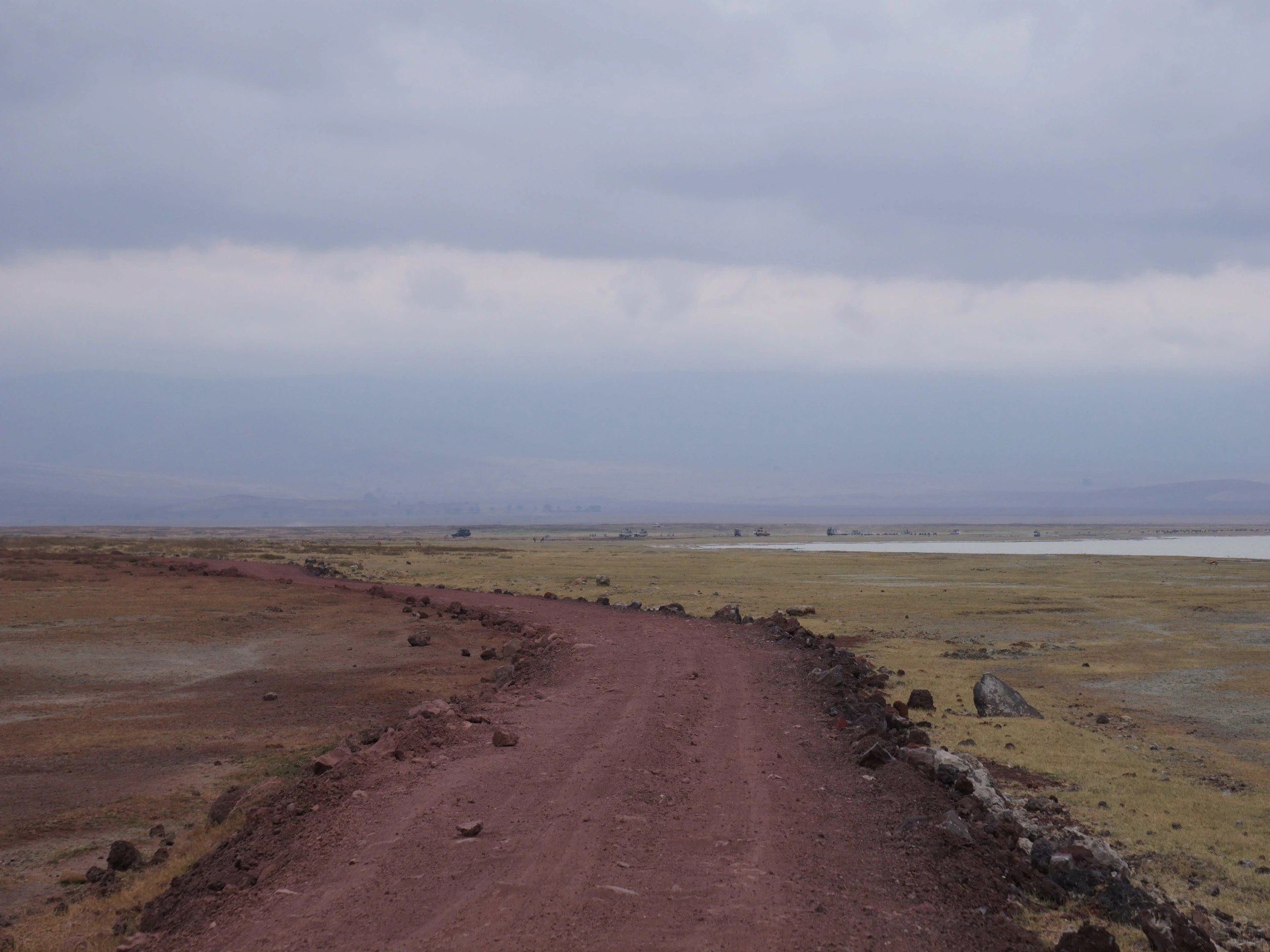
The reason why Ngorongoro Crater is one of the best spots in Africa to experience wildlife is because of its size. It’s just 264 sq km big and you can find every animal possible, lions, African elephants, rhinos, hippos, hyenas, giraffes, zebra, wildebeest. Because it’s so small the chances of spotting the Big 5 in a single day are even higher. Another great part about the crater is it is the largest inactive caldera(Large depression formed when a volcano erupts and collapses). This place too will give you vibes from The Lion King movie.
Tarangire National Park – Did someone say elephants?
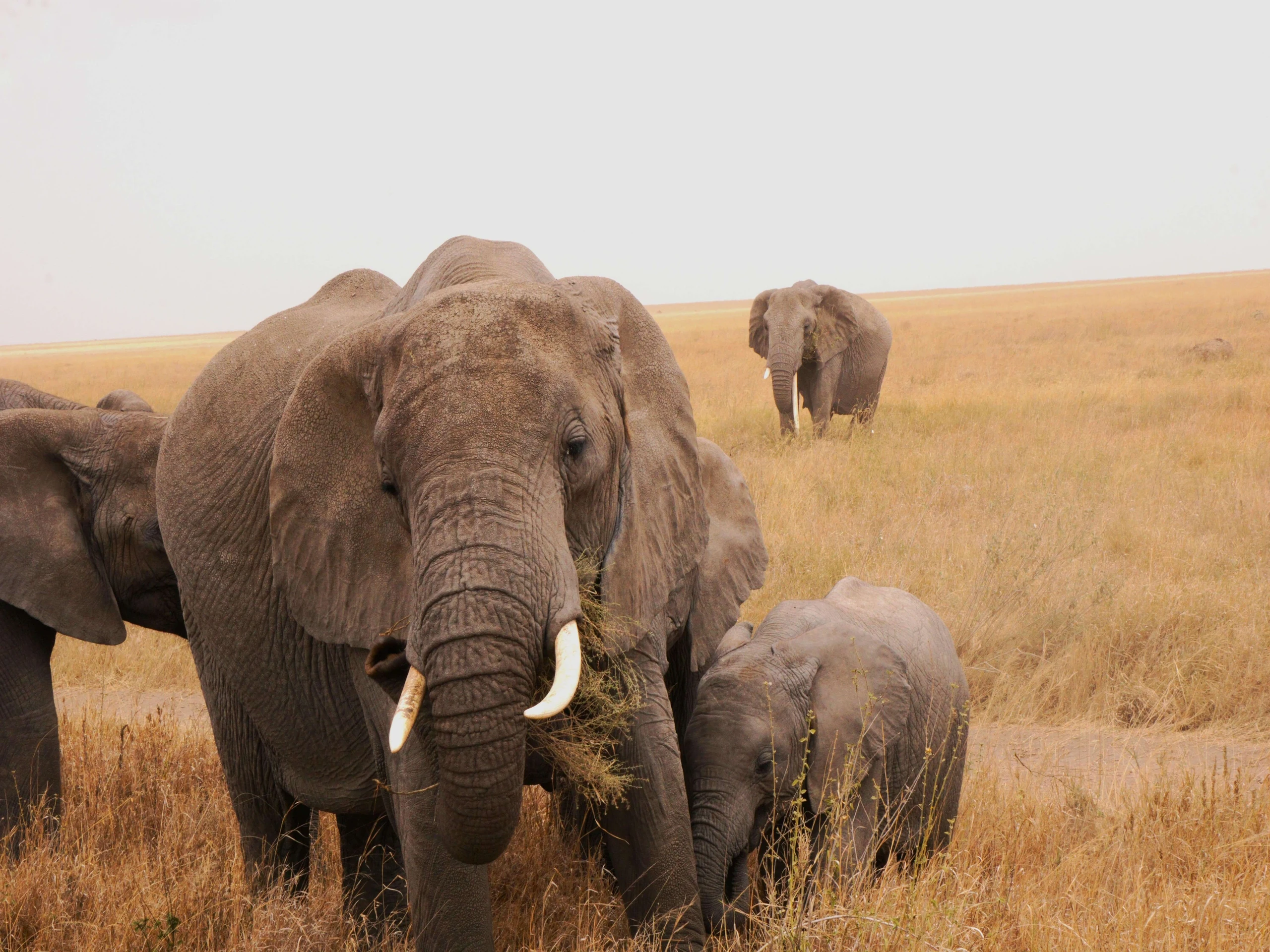
If you’re an Elephant lover, you are going to love this place. The Tarangire National Park is famous for its herds of elephants and baobab trees also known as Trees of Life. There is not one corner in the park where you can’t spot elephants. Tarangire makes a great option to start your Tanzania safari experience.
Lake Manyara National Park – Tree Climbing Lion?
What makes Lake Manyara National Park famous is the unique population of tree-climbing lions, which is not seen in the other national parks. It is a different sight altogether when you see the lions resting on the branches of the trees. Lake Manyara is also home to a wide variety of wildlife and bird species.
Lake Natron – Flamingos and Red Lake
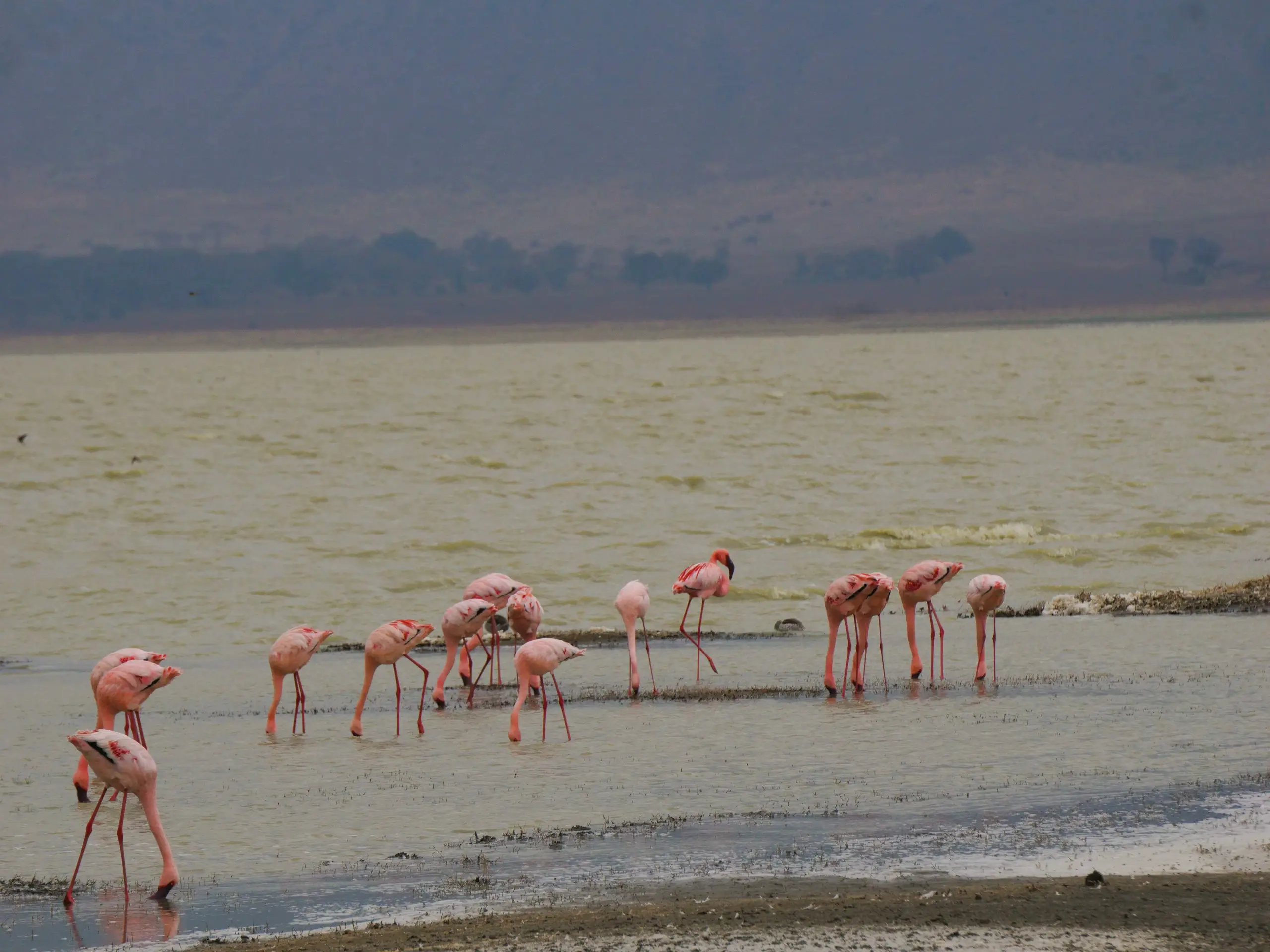
Lake Natron is famous for its flamingoes and the red color of the lake. The lake’s unique color is due to the presence of microorganisms and bacteria. The combination of the pink flamingos against the red lake creates such an amazing view.
If you’re fancying an adventure, do climb Ol Doinyo Lengai, the only active volcano in Tanzania that is in the same region.
Selous Game Reserve – Boat Safari
Did you think Serengeti was a big national park, then let me introduce you to Selous which is the biggest national park in Africa. Contrary to Serengeti, this park sees a lower footfall from tourists. But one cannot miss the boat safari in Rufiji River when visiting Selous National Park.
Gombe Stream National Park – Jane Goodall and her Chimpanzees
Gombe National Park is famous for being the place where renowned primatologist Jane Goodall conducted her groundbreaking research back in 1960. Wouldn’t it be cool to see the chimpanzees who are the close living relatives to us humans? Jane Goodall’s research revolutionized our understanding of these primates at Gombe National Park. Seeing the chimpanzees here is still very high on my bucket list .
These are not all the national parks Tanzania has, but these are some of the best ones to experience the wildlife in Tanzania.
4. How long should a safari be in Tanzania
A safari in Tanzania can be for as little as 3 days to even 3 weeks, it all depends on your budget and preferences. The majority of safaris are 5-7 days long and generally cover the North circuit in Tanzania, which includes Serengeti, Ngorongoro Crater & Tarangire. You can also choose longer safari options to visit the other remote safaris and experience specialized activities like walking safaris or hot air balloon rides.
If you want to experience the great wildebeest migration, it’s best to opt for a 6-day safari and stay at least a day in northern Serengeti.
5. How much does the Tanzania safari cost?
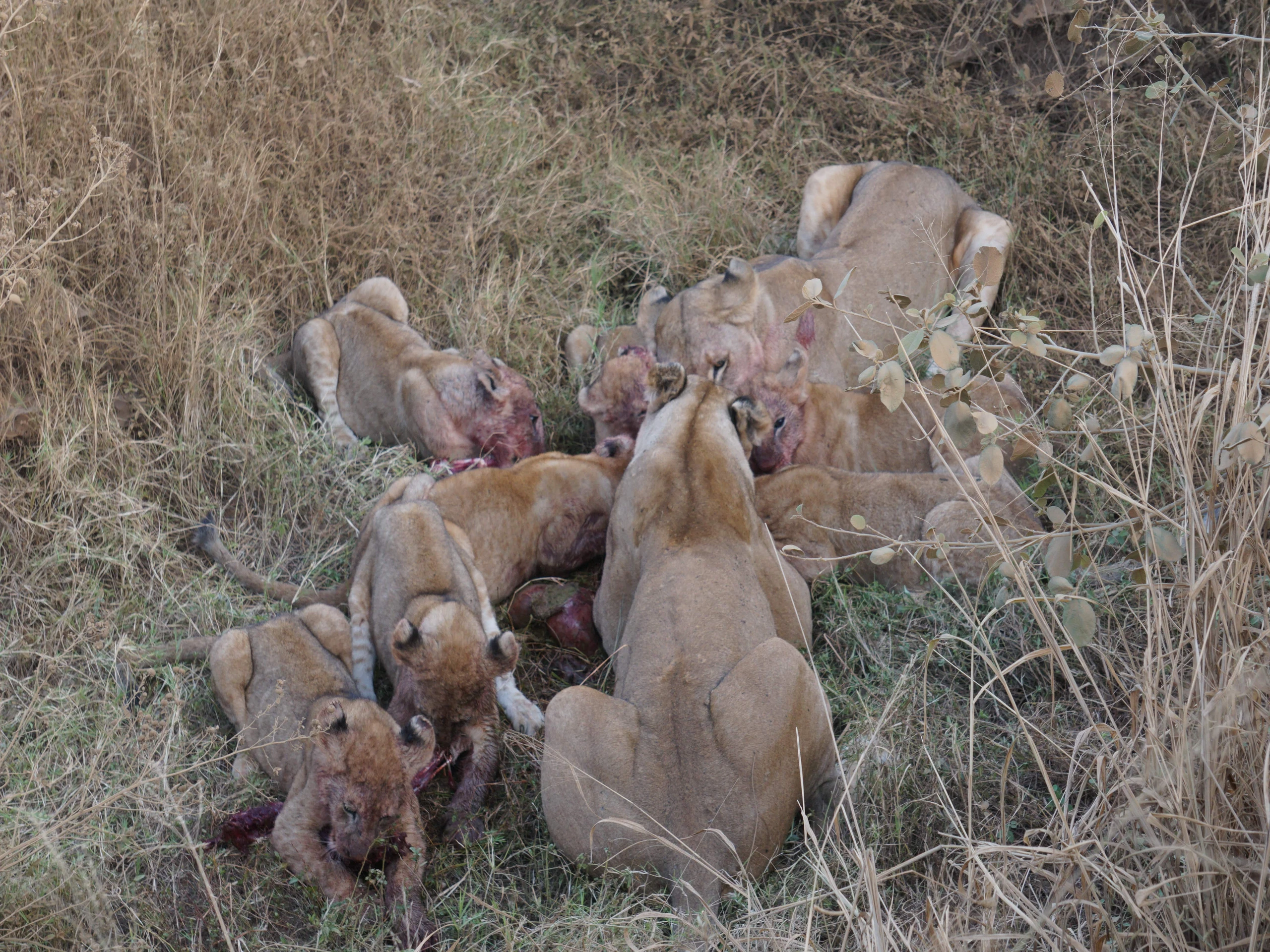
The most important aspect of your Tanzania safari is the budget, and how expensive is it going to be. When compared to Kenya, the Tanzania safari are a little more expensive but they also provide a unique experience.
Tanzania Safari for a budget traveler
For a traveler to experience Tanzania safari on a budget, it is very much possible and there are two ways of doing this. Book your safari well in advance, this means maybe 3-4 months before your safari date. You can also travel on a budget by booking a camping safari or joining a group safari. A budget safari would cost somewhere between $150-$200/day.

Mid-range Tanzania Safari
If you’re planning to do a safari with your family or your partner, a mid-range safari would be a great option for you. Unlike budget safaris, you get to stay in lodges rather than camping tents. If you still want to cut costs, you can opt to join groups but stay in lodges. A mid-range Tanzania safari would cost somewhere between $250- $400/day.
Luxury Tanzania Safari
A luxury safari in Tanzania has no bounds, you can choose to fly into northern Serengeti or stay in the most luxurious camps overlooking the Mara River. You have a plethora of options and activities to choose from. The luxury safaris will cost anywhere starting from $600/day.
6. What to Expect on a Tanzania Safari
Tanzania safari in itself is a thrilling adventure that promises unique experiences. A safari in Tanzania is so much more than a vacation, let’s look at some of the things you are going to experience on your safari.
Varied Landscape
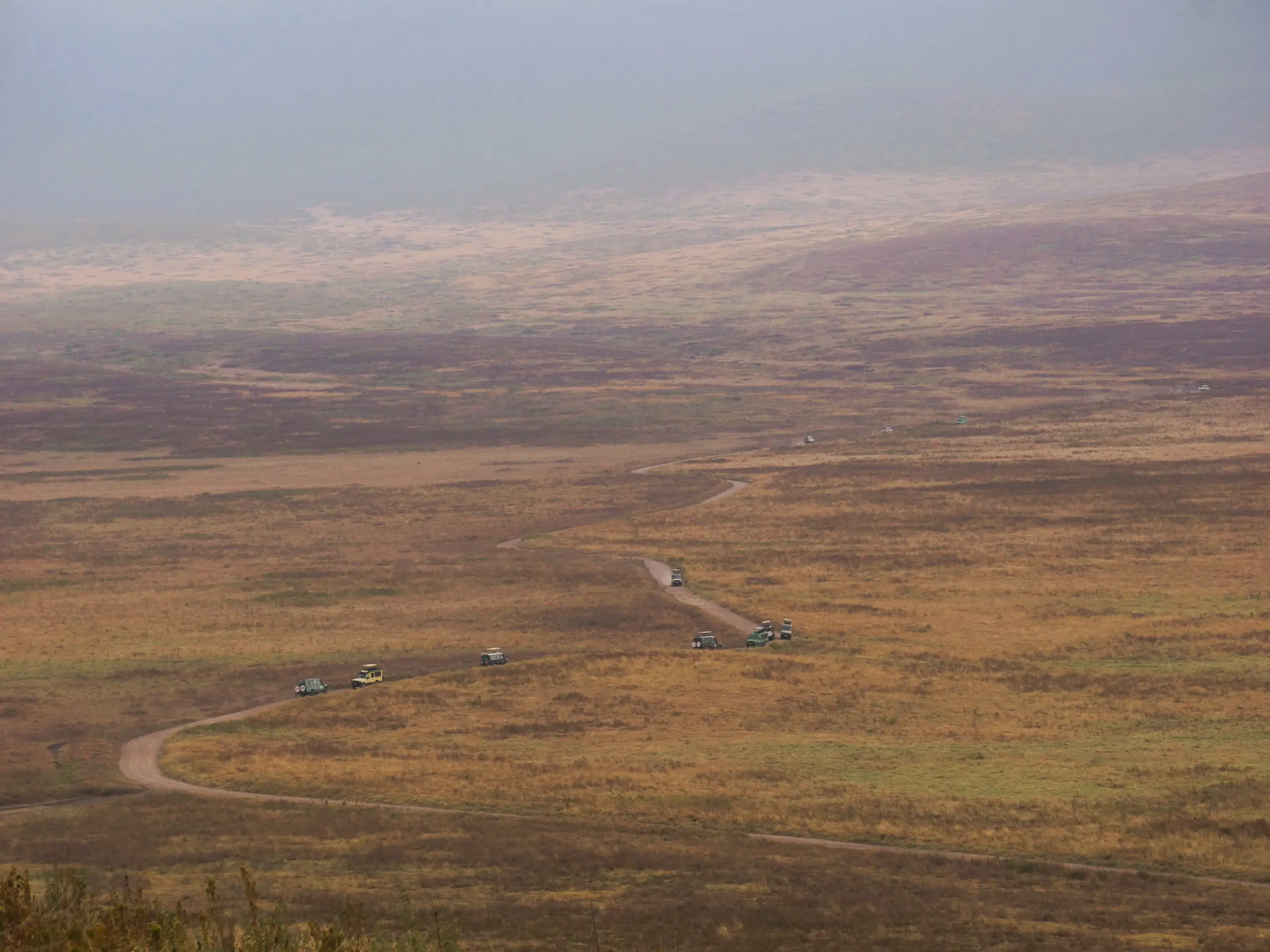
From the vast savannahs of Serengeti to the stunning Ngorongoro crater, from the red-looking Lake Natron to the lush forests of Tarangire National Park, Tanzania has every landscape possible. Each of these landscapes is going to leave you spellbound and astonished. Regardless of which Safari you choose, you’re in for a once-in-a-lifetime experience.
Abundance of Wildlife

I don’t even have to say anything about the wildlife in Tanzania, you already know it for the good. But still, let me list down what you can see. The wildebeest and pride of lions in Serengeti, the Big 5 in Ngorongoro crater, the elephants in Tarangire, the chimpanzees in Gombe, and the flamingoes in Lake Natron. You will also spot the ugly 5(warthog(pumba), vulture, wildebeest, maribu stork, and hyenas).
These are just the specialty of some of these parks but you’ll majorly see all of it in all the parks.
Be flexible and open-minded
This is one of the things that I didn’t read anywhere when I was planning. You might see the Big 5 or not see them at all, it’s not really in your hands. You might see a big cat(lion, leopard, cheetah) hunt or just see them sleeping. It’s wildlife so not everything is in our hands.
You might get a puncture or your jeep breaks down completely and you might not be able to complete your safari, so be flexible and open-minded about some of these scenarios. I’m sure your safari company is there to give you the best experience of the Tanzania safari.
Minimal phone or internet coverage
One good thing about the national parks is you barely get any connectivity which makes you more connected to the place and the wildlife. You’re not checking that important mail when one of the lions is on a hunt right in front of you.
You still do get limited connectivity here and there for the most basic calls and messages. Some of the safari companies also offer portable wifi, so do ask them about this.
Food quality
A lot of you might worry about how the food will be on the safari. Let me tell you I had some of the best dishes on the safari and the safari company also provided us with a personal chef. If you let the safari know about your food options, they can arrange all types of food for you. Whether you’re vegan, vegetarian, or gluten-free, you don’t have to worry about the food.
Where to use the washroom during safari?
You might wonder when on a safari, where do you go for the washrooms? All the campsites and lodges have washrooms. The issue is when you’re on a game drive because you can’t step down from the Jeep.
The best thing is to let your guide know about it so he can find a spot where it’s safe for you to get down, and you generally go behind the jeep or in a small bush. There are also a few washrooms across the national park which can be used. Our guide Omary gave nature’s call a fun name bushy-bushy.
Long Safari Days
Be prepared for early wake-up calls and breakfast because there are going to be long safari days when you leave the camp in the morning by 7 am and do not return until it gets dark. These are the most fun days because you are out in the wild all day and get to see so much different wildlife.
Free massage and face spa
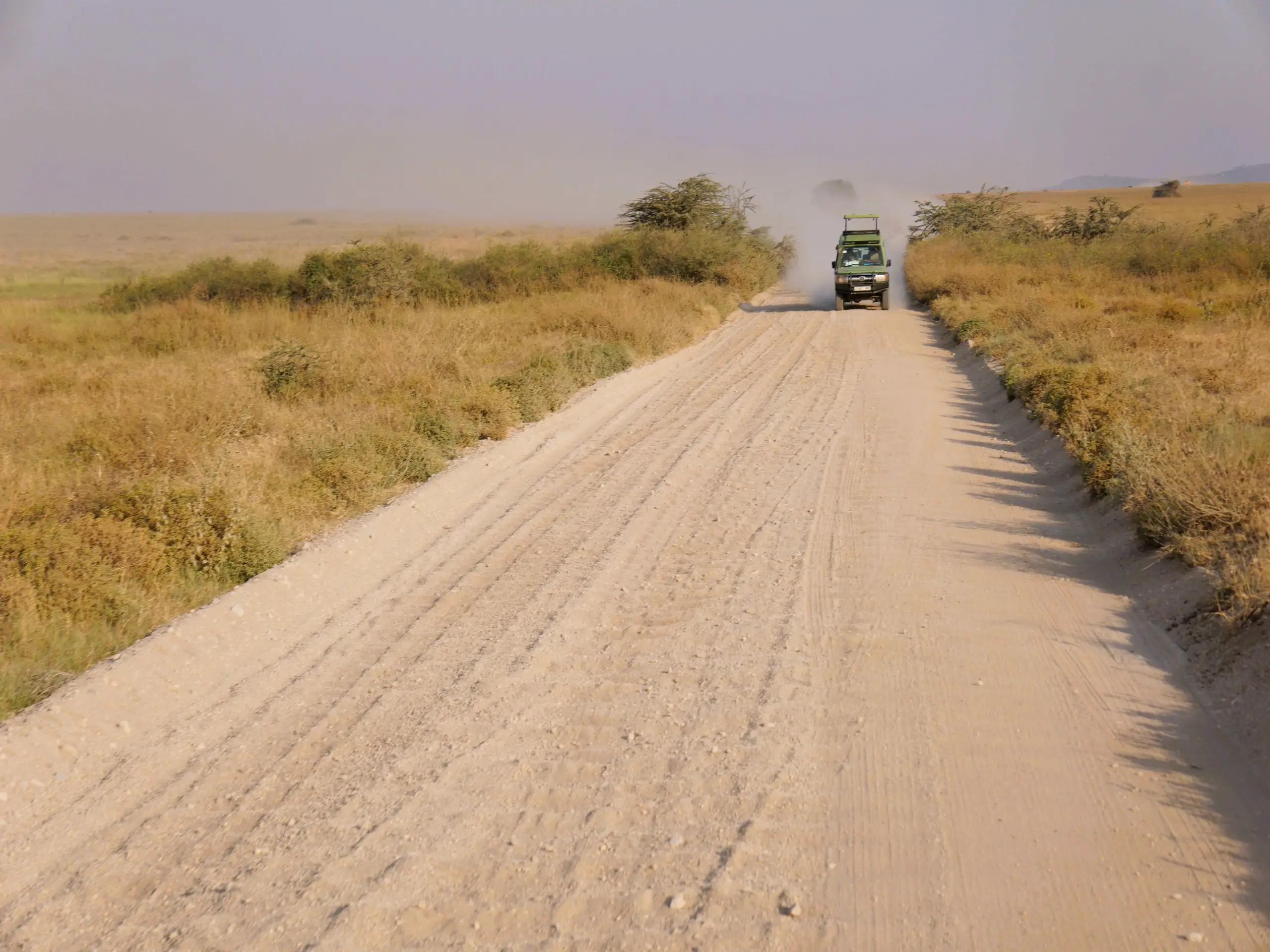
If you’ve booked a Tanzania safari and your safari company doesn’t inform you about the free massage and face spa, then they are not the best company. While as much as free massages and face spas might excite you, they are not exactly what you think.
There are barely any roads in the national parks so be ready to sit in a jeep for 5-6 hours on bumpy paths, that’s your free massage. There is so much dust again because barely any roads that you will notice when you wash your face in the evening or by looking at the condition of your clothes, that’s your free spa. These freebies come with all the safaris.
7. Everything you need to know about Wildebeest Migration

This in itself is a big topic, but let me tell you a few points that will help you see the biggest migration on earth.
You need to book your safari between mid-July and mid-August because that is the time when you have the highest chance of experiencing the migration.
Book a minimum of 2 full-day game drives in northern Serengeti, which means staying a night in northern Serengeti to maximize your chances of seeing it.
Be patient about seeing the migration because you might see the wildebeests on the banks of the river but not crossing them, again it’s the wild we can’t control when they cross.
Read about how I saw the greatest wildebeest migration on budget .
8. Photography tips for your Tanzania safari

If you’re also someone like me who likes to take photographs then Tanzania safari is going to be a paradise for you. The most important thing is to carry a telephoto lens, not just any normal telephoto but at least a 400mm lens or a video camera/handicap with a crazy zoom. I carried a 200mm lens but wished so many times that I had a 400mm.
As for the camera anything works, whether you’ve got a Sony, Canon, or a Nikon.
Here is the list of gadgets that I used on my Tanzania safari
- Sony Alpha 6000Y
- Lightweight Tripod
9. Packing essentials
Here is a packing list for your Tanzania Safari
- 3-4 shirts/t-shirts: Loose fitting and lightweight
- 2-3 khaki shorts or pants
- Fleece or a jacket especially for Ngorongoro crater and early mornings
- A rain jacket
- 3 pairs of socks
- Shoes/boots and a pair of slippers
- Hats and sun protection
- Insect repellant cream
- Travel adapters and a power bank
- Toiletries
It is important to know that camouflage is not allowed to be worn as it resembles the local army. You should also not wear red or any dark colors as some animals get agitated by seeing them. It’s best to wear a light color, khaki, or shades of forest green.
10. Tipping on a Tanzania Safari

It is common practice to tip to show the guides and chefs appreciation. While it is not mandatory, it does help greatly impact their livelihood. It is recommended to tip $10/day per person or anything that you deem fit.
11. Questions to ask your safari company
As I had mentioned earlier here is a list of questions you should ask your safari company before you finalize your Tanzania Safari.
- What is included in the safari package?
- What is the type of accommodation and can you show me the pictures of it?
- What transportation will be used for our safari?
- How experienced are the guides and are they certified?
- Are there any other optional activities or excursions available?
- How do you handle medical emergencies?
- Can you accommodate my dietary preferences?
- Can you provide previous client testimonials?
- In extreme conditions if the jeep breaks down what are the options?
- If we miss a game drive because of a puncture or because of an issue in the jeep, how do you handle that?
- Is the accommodation before/after included in the safari?
- How many people are on the safari(in the case of a group safari?)
- What is the payment and cancellation policy
- Do you provide portable internet and binoculars during the safari
- Are there any additional costs not mentioned in the safari package
I hope this list of questions and this guide helps you plan your perfect Tanzania safari experience. To date, my Tanzania safari has been the best wildlife experience and I hope you too have the same experience.
Tanzania Safari Cost from India
If you’re travelling from India for your Tanzania Safari here is a small breakdown of the costs
Safari cost for 5 days : ₹80,000 per person
Flight costs(from Mumbai) : return flights starting from ₹49,000 per person. DM me on Instagram to find these prices
Visa Cost : ₹4,100
The total cost for a 5-day safari from India would be ~ ₹135,000 per person
Spending a week in Zanzibar(Additional) : 30,000 per person
PS: The bigger the group the lesser would be the cost per person
Frequently asked questions about planning a Tanzania Safari
Q1. how can i perfectly plan for my tanzania safari tours.
To perfectly plan your Tanzania Safari make sure to do your thorough research on – National parks you want to visit – No of days you want the safari to be – Which safari lodge you want to stay at – Packing based on the list above – Finalizing the safari company
Or Contact any of the below companies to help you
Q2. How many days do you need for the Tanzania safari?
The duration of the Tanzania safari depends on your budget and preferences, On an average it is best to do a 5-6days safari which includes Serengeti, Ngorongoro Crater, and Tarangire National Park
Q3. Do you need malaria pills for Tanzania Safari?
Yes, it is recommended to take malaria pills when going on a safari in Tanzania as the risk of contracting malaria is high in certain regions. It is always best to consult with a healthcare professional or your local doctor before your trip to determine the necessary precautions to take.
Q4. Is Safari better in Tanzania or Kenya?
It depends on the type of preferences you have. I had a better experience in Tanzania because I could see the great migration, and it was very high on my list. Whereas in Kenya I could spot the Big 5 in a single day.
Q5. What is the cheapest way to do a safari in Tanzania?
Ans. The cheapest way to do a safari in Tanzania is to take a group camping safari and book it well in advance(3-4months)
Where to go after the safari?
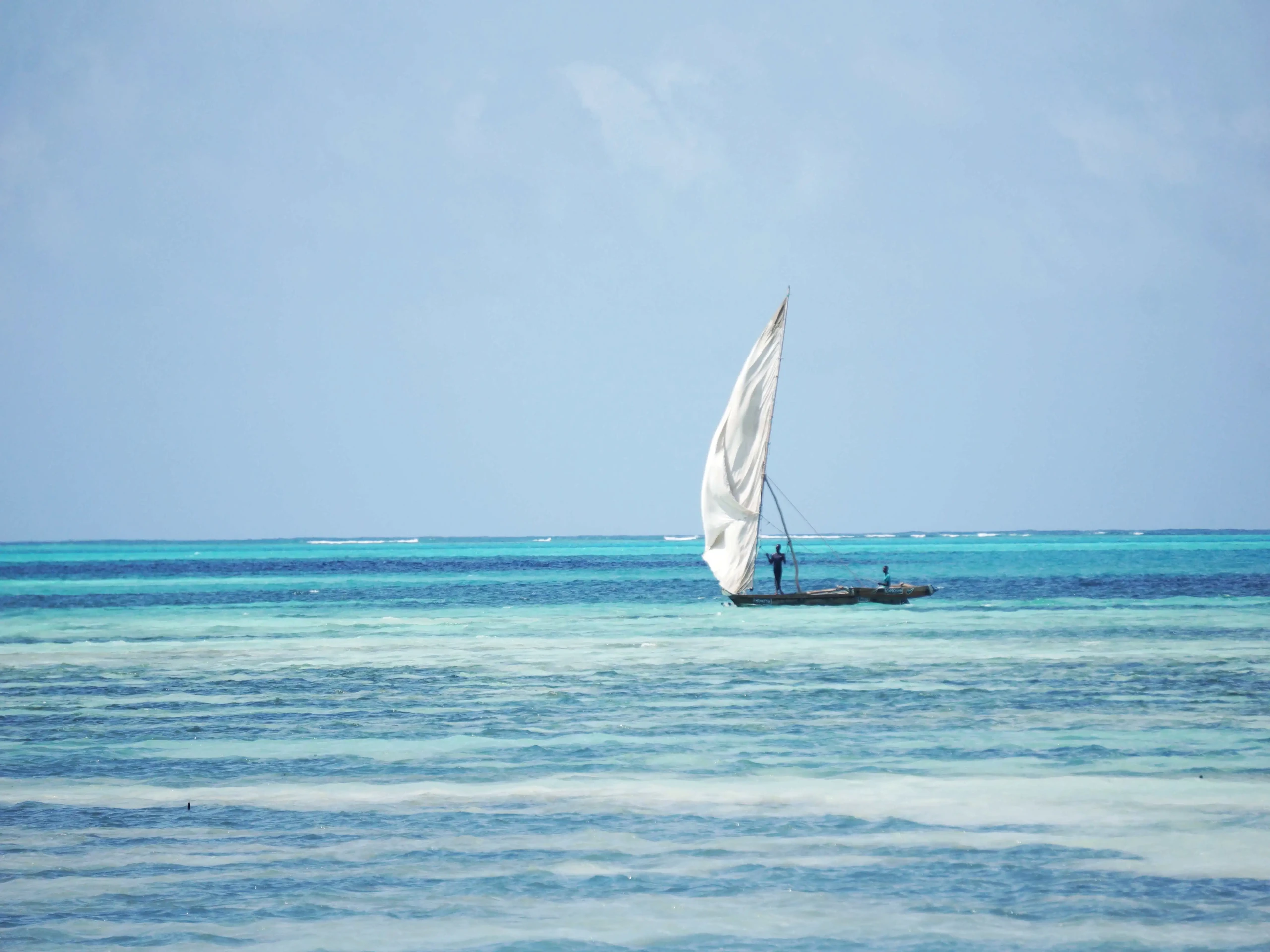
Still, have some time after the safari and want to relax? You should head to Zanzibar. Here is a list of guides I have written around Zanzibar:
- The Ultimate Zanzibar Travel Guide For First-Time Visitors(2024)
- The Ultimate Travel Guide to Paje: Top Things to Do and See
- Kizimkazi Travel Guide: The Hidden Gem of Zanzibar
Zanzibar Food Guide: 14 Must-Try Local Dishes
On the contrary, if you want to go on another adventure after your safari, then you should go hiking. No, I’m not talking about Kilimanjaro or Mt Meru. I’m talking about Tanzania’s only active volcano Ol Doinyo Lengai .
I hope the above information helps you plan your perfect safari adventure. If you still have questions about the safari or Tanzania, you can either drop them in the comments or DM me on Instagram stories.of.raku

You May Also Like

5-Days Wildebeest Migration Safari in Tanzania on Budget

Tanzania Tourist Visa for Indians(2024): How to Apply
Leave a reply cancel reply.
Your email address will not be published. Required fields are marked *
This site uses Akismet to reduce spam. Learn how your comment data is processed .

IMAGES
VIDEO
COMMENTS
Our incredible week-long safari in Tanzania! We saw all "Big Five" African animals, met with local tribes like the Hadzabe, and traveled through Serengeti National Park, Ngorongoro Crater, Lake...
Serengeti National Park is one of the world's largest game reserves and is considered the best safari destination in Africa. Serengeti National Park is UNESC...
My first ever African safari was here in the Serengeti of Tanzania and it was one of the most exciting moments of my life.
Within this travel guide, you will find all the information you need to help you plan out a safari trip of a lifetime in Serengeti National Park, including a suggested itinerary, a guide on how to pick the right safari tours, and so much more.
Take the guesswork out of planning a Tanzania safari. Comprehensive guide includes best parks, when to go, wildlife to see, recommendations & more.
1. Best time to visit Tanzania for a Safari. 2. Choosing the right safari company. 3. Different national parks in Tanzania for safari. Serengeti National Park – Treasure Trove of Wildlife. Ngorongoro Crater – Big 5 Haven. Tarangire National Park – Did someone say elephants? Lake Manyara National Park – Tree Climbing Lion?